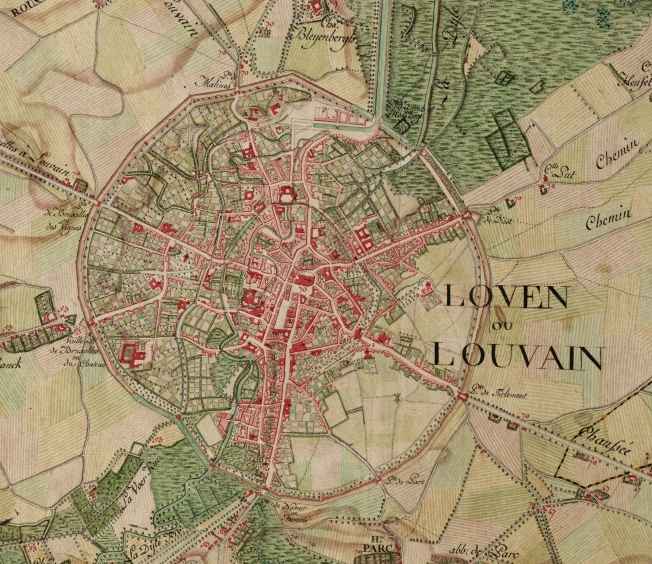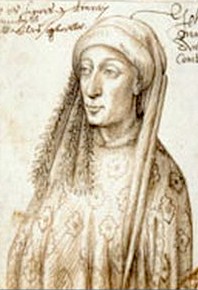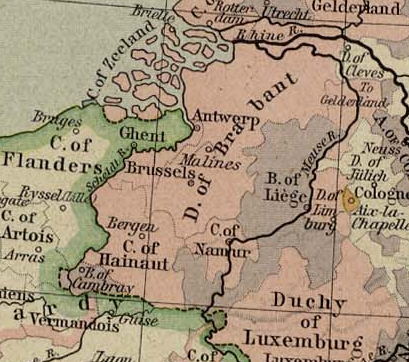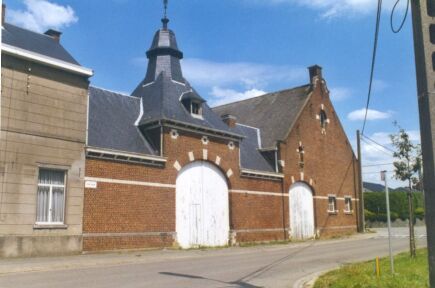|
Louvain
Leuven (, ) or Louvain (, , ; german: link=no, Löwen ) is the capital and largest city of the province of Flemish Brabant in the Flemish Region of Belgium. It is located about east of Brussels. The municipality itself comprises the historic city and the former neighbouring municipalities of Heverlee, Kessel-Lo, a part of Korbeek-Lo, Wilsele and Wijgmaal. It is the eighth largest city in Belgium, with more than 100,244 inhabitants. KU Leuven, Belgium's largest university, has its flagship campus in Leuven, which has been a university city since 1425. This makes it the oldest university city in the Low Countries. The city is home of the headquarters of Anheuser-Busch InBev, the world's largest beer brewer and sixth-largest fast-moving consumer goods company. History Middle Ages The earliest mention of Leuven (''Loven'') dates from 891, when a Viking army was defeated by the Frankish king Arnulf of Carinthia (see: Battle of Leuven). According to a legend, the city's red ... [...More Info...] [...Related Items...] OR: [Wikipedia] [Google] [Baidu] |
Old University Of Leuven
The Old University of Leuven (or of Louvain) is the name historians give to the university, or '' studium generale'', founded in Leuven, Brabant (then part of the Burgundian Netherlands, now part of Belgium), in 1425. The university was closed in 1797, a week after the cession to the French Republic of the Austrian Netherlands and the principality of Liège (jointly the future Belgium) by the Treaty of Campo Formio. The name was in medieval Latin Studium generale Lovaniense or Universitas Studii Lovaniensis, in humanistical Latin Academia Lovaniensis, and most usually, Universitas Lovaniensis, in Dutch Universiteyt Loven and also Hooge School van Loven. It is commonly referred to as the University of Leuven or University of Louvain, sometimes with the qualification "old" to distinguish it from the Catholic University of Leuven (established 1835 in Leuven). This might also refer to a short-lived but historically important State University of Leuven, 1817–1835. Th ... [...More Info...] [...Related Items...] OR: [Wikipedia] [Google] [Baidu] |
KU Leuven
KU Leuven (or Katholieke Universiteit Leuven) is a Catholic research university in the city of Leuven, Belgium. It conducts teaching, research, and services in computer science, engineering, natural sciences, theology, humanities, medicine, law, canon law, business, and social sciences. In addition to its main campus in Leuven, it has satellite campuses in Kortrijk, Antwerp, Ghent, Bruges, Ostend, Geel, Diepenbeek, Aalst, Sint-Katelijne-Waver, and in Belgium's capital Brussels. KU Leuven is the largest university in Belgium and the Low Countries. In 2017–18, more than 58,000 students were enrolled. Its primary language of instruction is Dutch, although several programs are taught in English, particularly graduate and postgraduate degrees. KU Leuven consistently ranks among the top 100 universities in the world by major ranking tables. As of 2021, it ranks 42nd in the '' Times Higher Education'' rankings, 70th according QS World University Rankings, 87th according to th ... [...More Info...] [...Related Items...] OR: [Wikipedia] [Google] [Baidu] |
Brussels
Brussels (french: Bruxelles or ; nl, Brussel ), officially the Brussels-Capital Region (All text and all but one graphic show the English name as Brussels-Capital Region.) (french: link=no, Région de Bruxelles-Capitale; nl, link=no, Brussels Hoofdstedelijk Gewest), is a region of Belgium comprising 19 municipalities, including the City of Brussels, which is the capital of Belgium. The Brussels-Capital Region is located in the central portion of the country and is a part of both the French Community of Belgium and the Flemish Community, but is separate from the Flemish Region (within which it forms an enclave) and the Walloon Region. Brussels is the most densely populated region in Belgium, and although it has the highest GDP per capita, it has the lowest available income per household. The Brussels Region covers , a relatively small area compared to the two other regions, and has a population of over 1.2 million. The five times larger metropolitan area of Brussel ... [...More Info...] [...Related Items...] OR: [Wikipedia] [Google] [Baidu] |
Duchy Of Brabant
The Duchy of Brabant was a State of the Holy Roman Empire established in 1183. It developed from the Landgraviate of Brabant and formed the heart of the historic Low Countries, part of the Burgundian Netherlands from 1430 and of the Habsburg Netherlands from 1482, until it was partitioned after the Dutch revolt. Present-day North Brabant (''Noord-Brabant'') was ceded to the Generality Lands of the Dutch Republic according to the 1648 Peace of Westphalia, while the reduced duchy remained part of the Habsburg Netherlands until it was conquered by French Revolutionary forces in 1794, which was recognized by treaty in 1797. Today all the duchy's former territories, apart from exclaves, are in Belgium except for the Dutch province of North Brabant. Geography The Duchy of Brabant (adjective: '' Brabantian'' or '' Brabantine'') was historically divided into four parts, each with its own capital. The four capitals were Leuven, Brussels, Antwerp and 's-Hertogenbosch. Before ' ... [...More Info...] [...Related Items...] OR: [Wikipedia] [Google] [Baidu] |
Korbeek-Lo
Korbeek-Lo is a large village located in the Belgian province of Flemish Brabant, a short distance to the east of Leuven. The total area is 39.75 km² which gives a population density, using 2006 values, of 829 inhabitants per km². As a result of extensive local government boundary changes in 1977 Korbeek-Lo, as an administrative entity, was abolished. Since then the more built up western part of Korbeek-Lo has been subsumed into Leuven while the more rural eastern part of the former municipality is now part of Bierbeek. History The history of Korbeek-Lo starts a long way back. On the St.-Martinusberg plateau traces have been found of prehistoric homesteads. There is also evidence of Roman settlement, and there is evidence of human habitation during the subsequent Frankish period. One of the surviving farmsteads bears the name "Het Dalemhof", of which the middle syllable is thought to derive from the Germanic word "heim", endorsing the view that the name is ... [...More Info...] [...Related Items...] OR: [Wikipedia] [Google] [Baidu] |
Dyle (river)
The Dyle (french: Dyle ; nl, Dijle ) is a river in central Belgium, left tributary of the Rupel. It is long. It flows through the Belgian provinces of Walloon Brabant, Flemish Brabant and Antwerp. Its source is in Houtain-le-Val, near Nivelles in Walloon Brabant. The most important cities along the Dyle are (starting from the source) Ottignies, Wavre, Leuven and Mechelen, the last of which is often called the 'Dijlestad' (Dyle City). The main tributaries of the Dyle are the rivers Demer (in Werchter, Rotselaar municipality), and the Zenne at the ''Zennegat'', on the farthest outskirts of Mechelen, where the canal Leuven-Mechelen also connects. A few hundred metres downstream, the confluence of the Dyle and the Nete at Rumst forms the river Rupel, which further comes into the Scheldt on which the Antwerp seaport is located. The Dyle used to be navigable for small ships from Werchter on, although nowadays commercial and pleasure navigation is limited to Mechelen, the upper ... [...More Info...] [...Related Items...] OR: [Wikipedia] [Google] [Baidu] |
Belgium
Belgium, ; french: Belgique ; german: Belgien officially the Kingdom of Belgium, is a country in Northwestern Europe. The country is bordered by the Netherlands to the north, Germany to the east, Luxembourg to the southeast, France to the southwest, and the North Sea to the northwest. It covers an area of and has a population of more than 11.5 million, making it the 22nd most densely populated country in the world and the 6th most densely populated country in Europe, with a density of . Belgium is part of an area known as the Low Countries, historically a somewhat larger region than the Benelux group of states, as it also included parts of northern France. The capital and largest city is Brussels; other major cities are Antwerp, Ghent, Charleroi, Liège, Bruges, Namur, and Leuven. Belgium is a sovereign state and a federal constitutional monarchy with a parliamentary system. Its institutional organization is complex and is structured on both regional ... [...More Info...] [...Related Items...] OR: [Wikipedia] [Google] [Baidu] |
Dirk Bouts
Dieric Bouts (born c. 1415 – 6 May 1475) was an Early Netherlandish painter. Bouts may have studied under Rogier van der Weyden, and his work was influenced by van der Weyden and Jan van Eyck. He worked in Leuven from 1457 (or possibly earlier) until his death in 1475. Bouts was among the first northern painters to demonstrate the use of a single vanishing point (as illustrated in his ''Last Supper''). Works Early works (before 1464) Bouts's earliest work is the '' Triptych of the Virgin's Life'' in the Prado (Madrid), dated to about 1445. The ''Deposition Altarpiece'' in Granada (Capilla Real) probably also dates to this period, around 1450–1460. A dismembered canvas altarpiece—now in the Royal Museums of Fine Arts of Belgium (Brussels), the J. Paul Getty Museum (Los Angeles), National Gallery (London), Norton Simon Museum (Pasadena), and a Swiss private collection—with the same dimensions as the ''Altarpiece of the Holy Sacrament'' may belong to this period. Th ... [...More Info...] [...Related Items...] OR: [Wikipedia] [Google] [Baidu] |
Leuven Arrondissement
The Leuven Arrondissement (; ) is one of two arrondissements in the Belgian province of Flemish Brabant. It lies east of the Brussels-Capital Region. The arrondissement has an area of and has (as of January 1, 2017) 502,602 inhabitants. Municipalities The arrondissement is made up of the following municipalities: * Aarschot * Begijnendijk * Bekkevoort * Bertem * Bierbeek *Boortmeerbeek * Boutersem *Diest * Geetbets * Glabbeek * Haacht *Herent * Hoegaarden *Holsbeek * Huldenberg *Keerbergen * Kortenaken * Kortenberg *Landen *Leuven * Linter * Lubbeek * Oud-Heverlee * Rotselaar * Scherpenheuvel-Zichem *Tervuren * Tielt-Winge * Tienen *Tremelo * Zoutleeuw Formerly independent municipalities or deelgemeenten: * Aarschot *Assent *Attenhoven * Attenrode * Averbode *Baal * Begijnendijk * Bekkevoort * Bertem * Betekom * Bierbeek * Binkom * Blanden *Boortmeerbeek *Bost * Boutersem * Budingen * Bunsbeek * Deurne *Diest * Dormaal *Drieslinter *Duisburg * Eliksem * Erps-Kwerps ... [...More Info...] [...Related Items...] OR: [Wikipedia] [Google] [Baidu] |
Flag Of Austria
The flag of Austria ( de-AT, Flagge Österreichs) is the flag of the nation of Austria. It consists of three bands of colour in the following order: red, white, and red. The Austrian flag is considered one of the oldest national symbols still in use by a modern country, with its first recorded use in 1230. The Austrian triband originated from the arms of the Babenberg dynasty. As opposed to other flags, such as the black-and-yellow banner of the Habsburgs, the red-white-red flag was from very early on associated, not with a reigning family or monarch, but with the country itself. In addition to serving as the flag of Austria since 1230, it was adopted as the naval ensigns and flags of the Grand Duchy of Tuscany and Duchy of Modena and Reggio in the 18th and 19th centuries respectively, as both were ruled by cadet branches of the House of Habsburg. History Origins The flag traces back to the coat of arms of the medieval Babenberg dynasty, a silver band on a red f ... [...More Info...] [...Related Items...] OR: [Wikipedia] [Google] [Baidu] |
Duchy
A duchy, also called a dukedom, is a medieval country, territory, fief, or domain ruled by a duke or duchess, a ruler hierarchically second to the king or queen in Western European tradition. There once existed an important difference between "sovereign dukes" and dukes who were ordinary noblemen throughout Europe. Some historic duchies were sovereign in areas that would become part of nation-states only during the modern era, such as happened in Germany (once a federal empire) and Italy (previously a unified kingdom). In contrast, others were subordinate districts of those kingdoms that had unified either partially or completely during the medieval era, such as France, Spain, Sicily, Naples, and the Papal States. Examples In France, several duchies existed in the medieval period, including Normandy, Burgundy, Brittany, and Aquitaine. The medieval German stem duchies (german: Stammesherzogtum, literally "tribal duchy," the official title of its ruler being '' Herzog'' ... [...More Info...] [...Related Items...] OR: [Wikipedia] [Google] [Baidu] |
Anheuser-Busch InBev
Anheuser-Busch InBev SA/NV, commonly known as AB InBev, is an American-Belgian multinational drink and brewing company based in Leuven, Belgium. AB InBev has a global functional management office in New York City, and regional headquarters in São Paulo, London, St. Louis, Mexico City, Bremen, Johannesburg and others. It has approximately 630 beer brands in 150 countries. AB InBev was formed through InBev (itself a merger between Interbrew from Belgium and AmBev from Brazil) acquiring Anheuser-Busch from the United States. In October 2015, Anheuser-Busch InBev announced a successful all-cash bid to acquire South African multinational competitor SABMiller; the merger was concluded in October 2016. It was the world's largest brewer even before the acquisition of SABMiller and is considered one of the largest fast-moving consumer goods companies in the world. The annual sales for the company in 2019 were US$52.3 billion; prior to the merger, ABInBev had realized US$45. ... [...More Info...] [...Related Items...] OR: [Wikipedia] [Google] [Baidu] |







